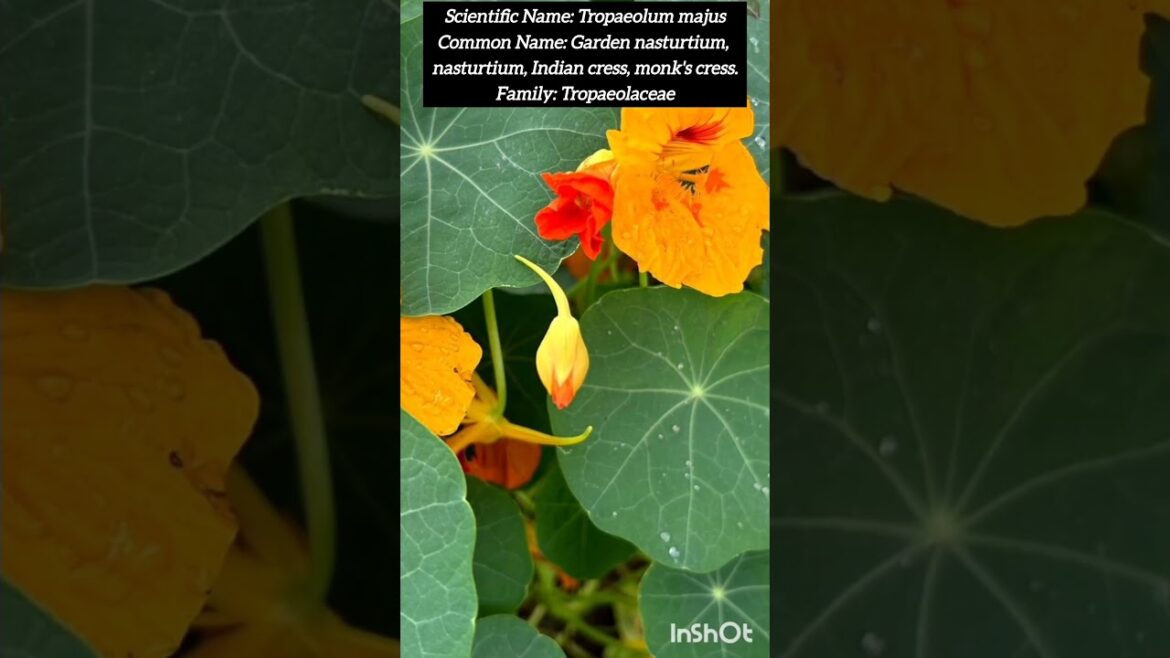Scientific Name: Tropaeolum majus
Common Name: Garden nasturtium, nasturtium, Indian cress, monk’s cress.
Family: Tropaeolaceae
It is a species of flowering plant in the family Tropaeolaceae, originating in the Andes from Bolivia north to Colombia. An easily-grown annual or short-lived perennial with disc-shaped leaves and brilliant yellow, orange or red flowers, it is of cultivated, probably hybrid origin.
It is a fast-growing plant, with trailing stems growing to 0.9–1.8 m (3–6 ft). The leaves are large, nearly circular, 3 to 15 cm (1 to 6 in) in diameter, green to glaucous green above, paler below; they are peltate, with the 5–30-cm-long petiole near the middle of the leaf, with several veins radiating to the smoothly rounded or slightly lobed margin.
The flowers are 2.5–6 cm in diameter, mildly scented,with five petals, eight stamens, and a 2.5–3 cm long nectar spur at the rear; they vary from yellow to orange to red, frilled and often darker at the base of the petals. The fruit is 2 cm broad, three-segmented, each segment with a single large seed 1–1.5 cm long.
Nasturtium leaves, like some other species, demonstrate the lotus effect, whereby rainwater falling on the surface gathers into globular droplets which roll off the leaf, leaving it dry and clean. All of the above-ground parts of the plants are edible.
#FlowerPlant #Gardening #PlantLover #NatureLover #BeautifulFlowers #GardenLife #FloralBeauty #FlowerLover #GreenThumb #PlantCare #HomeGarden #Botany #GrowFlowers #IndoorPlants #OutdoorGarden #Blossoms #NaturePhotography #FlowerPower #SpringVibes #FloralMagic #garden_nasturtium #photography #naturelover
Important Note: These details are sourced from Google. Kindly cross-check for accuracy. 😇😇

